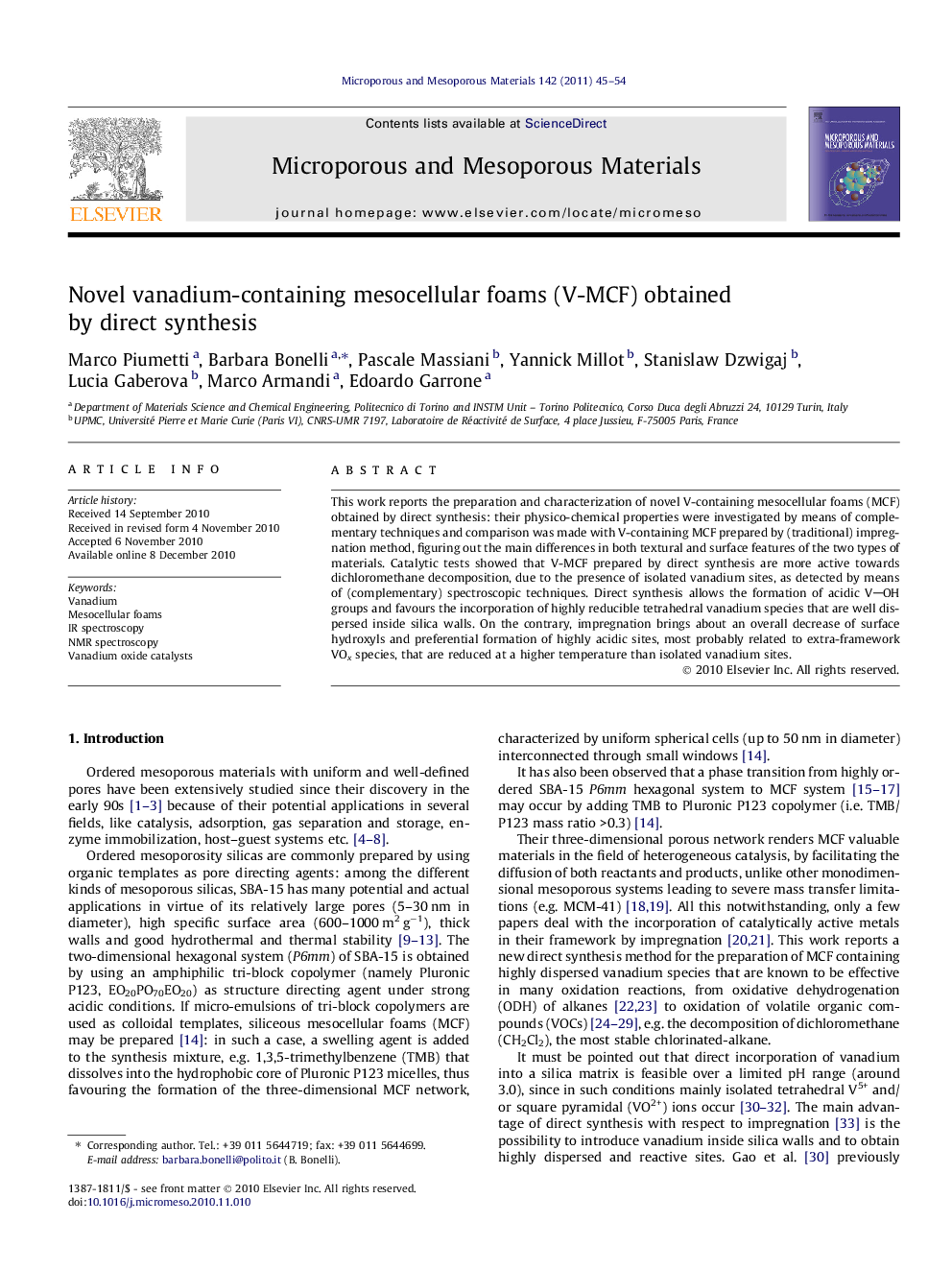| Article ID | Journal | Published Year | Pages | File Type |
|---|---|---|---|---|
| 74618 | Microporous and Mesoporous Materials | 2011 | 10 Pages |
This work reports the preparation and characterization of novel V-containing mesocellular foams (MCF) obtained by direct synthesis: their physico-chemical properties were investigated by means of complementary techniques and comparison was made with V-containing MCF prepared by (traditional) impregnation method, figuring out the main differences in both textural and surface features of the two types of materials. Catalytic tests showed that V-MCF prepared by direct synthesis are more active towards dichloromethane decomposition, due to the presence of isolated vanadium sites, as detected by means of (complementary) spectroscopic techniques. Direct synthesis allows the formation of acidic VOH groups and favours the incorporation of highly reducible tetrahedral vanadium species that are well dispersed inside silica walls. On the contrary, impregnation brings about an overall decrease of surface hydroxyls and preferential formation of highly acidic sites, most probably related to extra-framework VOx species, that are reduced at a higher temperature than isolated vanadium sites.
Graphical abstractFigure optionsDownload full-size imageDownload as PowerPoint slideResearch highlights► A novel synthesis procedure and physico-chemical characterization of Vanadium containing MCF. ► A careful control of synthesis pH is needed to attain incorporation of Vanadium inside MCF walls. ► The 3D network of V-MCF favours molecular diffusion, which is vital in catalytic applications. ► Vanadium dispersion, redox and acidic properties studied by means of complementary techniques.
